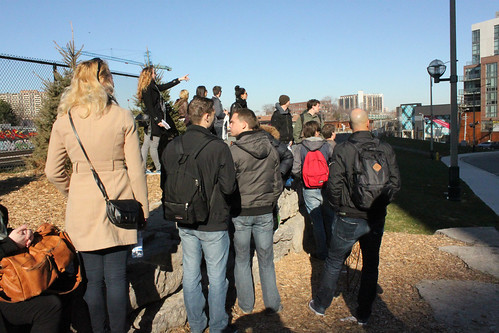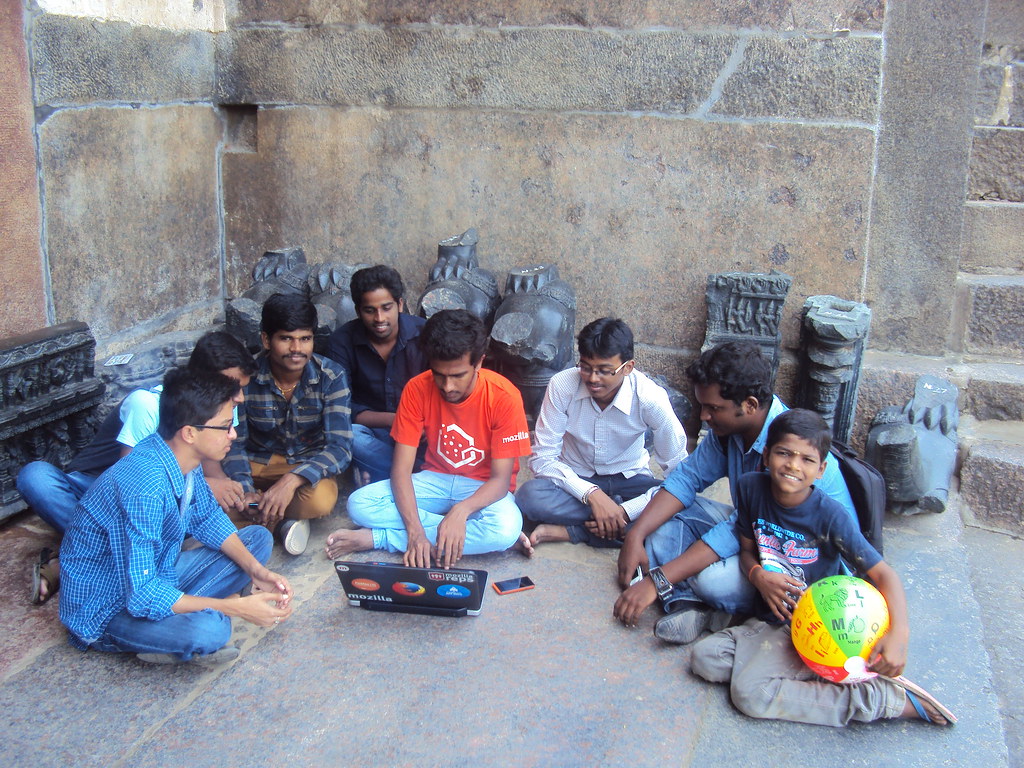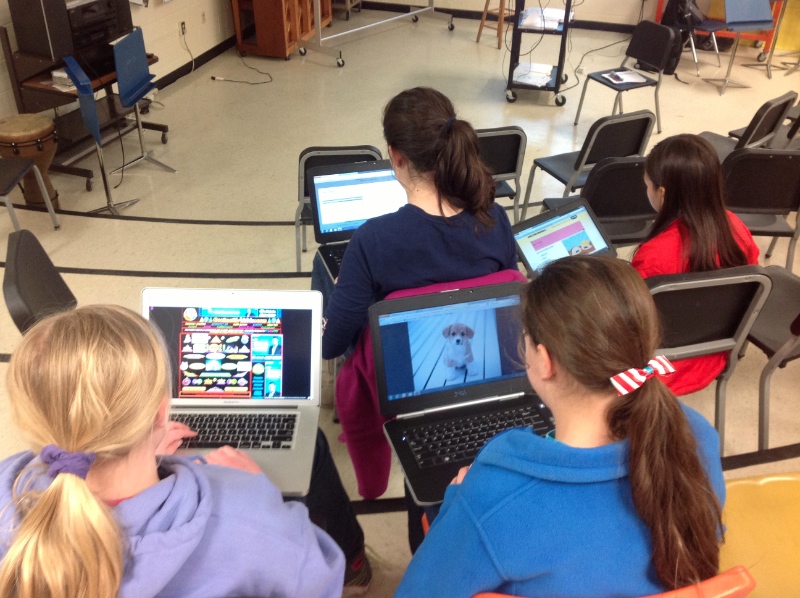Editor’s Note: Community Literacies is a new series that builds on the legacy of Webmaker’s Hottest. Each issue, we share a new set of stories, prototypes and community creations that teach the web. Have an idea? Get in touch with Curation Design Lead Kat Braybrooke.
In this issue, we explore new and unexpected ways that participatory and creative curriculum can make learning the web fun, from a digital storytelling kit that engages neighbours around urban experiences in Toronto, to a set of webmaking activities made for underprivileged kids in India, to Webmaker’s first-ever tutorial on Parallax webpage effects, to a set of resources build off an Indian HackerZine that introduce the “good” sides of hacker cultures.

An urban storytelling kit from the University of Toronto
Storytelling can be a powerful way to explore shared urban experiences, and this spring, Andi Argast and Michelle Gay set out to explore the possibilities via the “Your Story Goes Here” teaching kit for a community informatics course taught by Dr Karen Smith at the University of Toronto.
Says Andi, “Your Story Goes Here was inspired by a desire to see more people become actively and positively involved in shaping their city and neighbourhoods. The urban planning process is intimidating for many people but we believe that a diversity of voices in the planning process can help create a more livable city.
We also believe that these narratives can be a useful way to share perspectives that might be left out of more formal urban planning dialogues. Our research is informed by the fields of participatory design and community informatics, and is inspired by Leonie Sandercock, Jan Gehl and Richard Sennett, and we hope this kit can empower people to tell stories about the changes they want to see in their neighbourhoods and cities.”
The kit will form part of a larger body of work on community engagement, public space, and digital technologies that co-researchers and urban storytellers Andi and Michelle have been engaged with over the past two years as part of their Master of Information degrees at U of T.

A KidZilla teaching kit from India to show kids the basics
How can we make learning about computers a fun and interactive experience in rural school settings? This question inspired the creation of the Indian KidZilla initiative, built by Shreyas Narayanan Kutty and the Sathyabama Firefox Club in Chennai.
“This kit is based around our activities to teach the web to underprivileged kids In India. Kids play a very important role in shaping the future of the Web, and KidZilla is all about helping them start their own webmaker school clubs to #teachtheweb. We have recently expanded the scope of this project by collaborating with Emma Irwin, a Mozilla Rep who initiated the first Webmaker School Club in Victoria, BC.”
Thanks to a lot of volunteer work from Shreyas and his friends, the KidZilla project is already working with two schools in the region. “Since Maker Party is a big deal for us,” says Shreyas, “we are planning on initiating a Webmaker club each month during the campaign!”
The team is currently in the process of setting up curriculum for these clubs, and is looking for input and help from educators and open source enthusiasts around the world. Specific topics of interest for students involved in the clubs include hardware hacking, robotics, lo-fi webmaking and Arduinos. Shreyas asks that interested collaborators get in touch via email or Twitter.

A Parallax Effects Tutorial from Tech Girls in Virginia
For those who have been wondering how to share more advanced web design techniques to their learners, the Parallax scrolling effect is a great creative method. But where is the best place to start? Kim Wilkens, a longtime Webmaker pioneer in Virginia who started Tech Girls, a nonprofit with the mission of empowering girls to imagine their dreams through technology, had an idea.
Her new Parallax Effects tutorial takes learners through the process of building their own Parallax effects on a webpage, using Creative Commons images and introductory Javascript. The tutorial can also be remixed by teachers for use in the classroom, and by informal groups at Maker Parties and other events.
“I had seen the parallax effect used more and more on websites lately,” says Kim. “Because of this, I wanted to learn how to do it myself, so I built a kit. I’ll also be teaching lots of tech camps this summer, and I’ve found that putting a teaching kit together is a great way to share the learning with others. Creating something that is available as an open education resource for others to use and remix is an awesome bonus!”

A kit about about hacker culture from New Delhi, India
Understanding all the different kinds of hackers in the global hacker ecosystem can be a tricky business, but Indian White Hat enthusiast and programmer Tanay Pant was up for the challenge. Tanay’s first idea was to build an open “hackerzine” to introduce the topic in PDF form with the #CommunityParticipation web literacy competency in mind, but after discussion with Training Lead Laura Hilliger, Tanay decided to build it instead on an open and remixable webpage so other hackers would be able to interact with it directly. He also engaged with other community members on the Webmaker discussion list and IRC to ask them what they’d like to see before getting started.
Tanay adds, “This is a very small kit to spread awareness about hacker culture, and webmakers are more than welcome to remix and contribute to this project with us to transform it into a much larger resource for teaching about hacking communities!” Tanay invites community feedback and participation in this Webmaker Training discussion, and has also blogged about his experience on his personal blog.
We end this issue with many e-thanks and cat gifs for webmakers Andi, Michelle, Kim, Shreyas and Tanay for sharing such inspiring educational creations. We hope this issue has left you feeling inspired to remix, reflect and create your own! Have a great piece of content you want us to feature? Get in touch on Twitter.
Get involved
- Want help getting started? Add your idea to the list of kits in progress and we’ll set you up with the right collaborators.
- You can also get involved with a Maker Party in your region this summer, or start one of your own.
- Or, join one of our free training sessions to learn how to make and use your own content with other learners online.